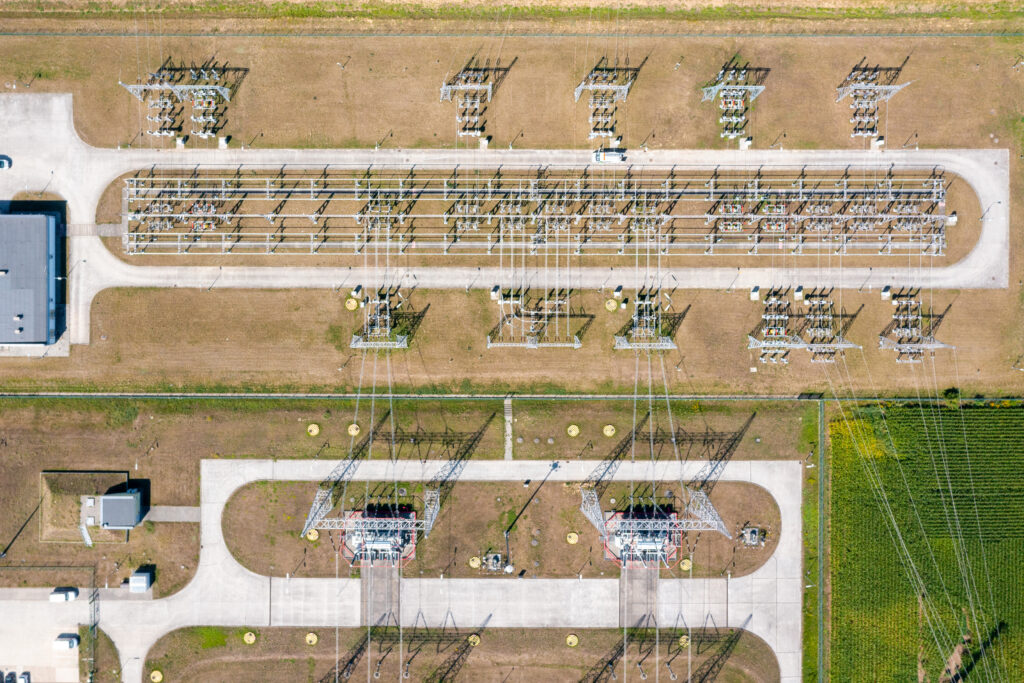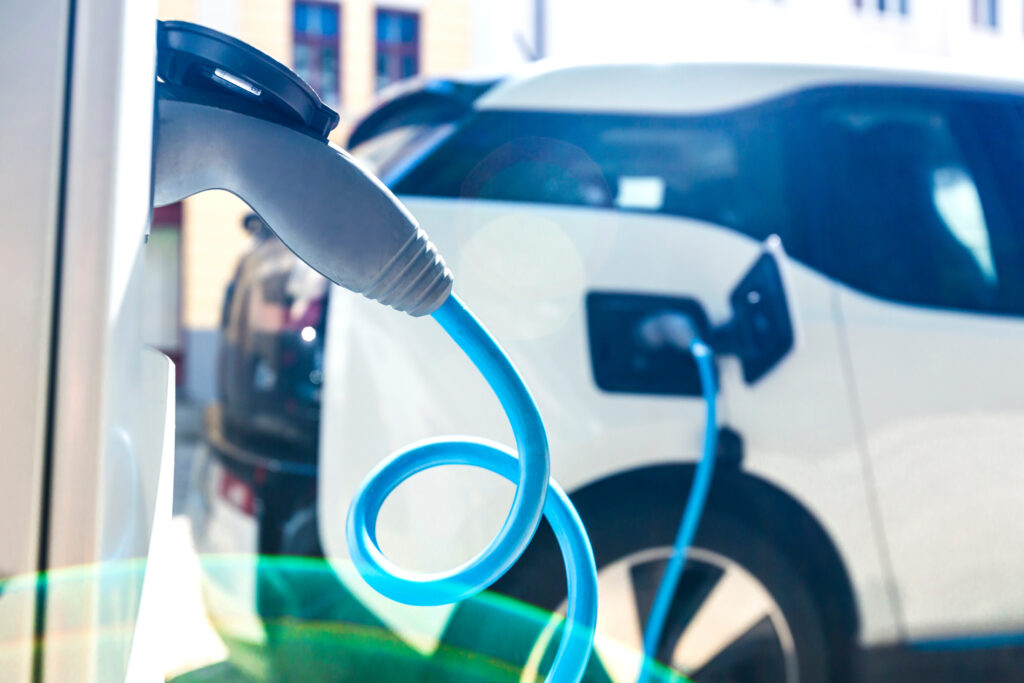As utility providers face growing demands for efficiency, reliability, and sustainability, new technologies are revolutionizing how electricity is generated, distributed, and consumed. How are these changes transforming the industry? What opportunities are emerging for utilities to adapt and thrive?
This is where the future of energy takes shape. In this article, we’ll explore the cutting-edge solutions reshaping electric distribution—and the savings, efficiency, and sustainability they bring.
Renewable Energy Integration
As the push for sustainability grows, integrating renewable energy sources like solar and wind has become essential. This transition is facilitated by:
- Reduced Generation Costs: Innovations in materials, manufacturing at scale, and energy storage have made renewable energy sources much more affordable, leading to lower generation costs for utilities and lower prices for consumers. Furthermore, utilities can reduce their reliance on costly fossil fuels, which are often more expensive due to fluctuating fuel prices, transportation costs, and emissions compliance fees.
- Enhanced Grid Management: Solar and wind generation is dependent on weather and therefore variable. Smart technologies such as advanced sensors, real-time data analytics, and automated controls to monitor and adjust energy flows dynamically allow for better integration of variable renewable sources, stabilizing the grid and reducing reliance on fossil fuels. These systems can predict fluctuations in renewable energy output based on weather forecasts and balance the grid by redistributing power where it’s needed most. For instance, when solar panels produce excess energy on a sunny day, smart grids can store the surplus in batteries or shift it to areas experiencing higher demand.
Cannon & Cannon, Inc (CCI) has worked on various integration solutions for clients, including incorporating solar arrays into a veteran housing project and conducting rate studies to ensure solar integration would be financially viable.


Smart Grids: Enhancing Efficiency and Reliability
Real-time monitoring and management of electricity flow extends beyond managing variable energy sources. Smart grids integrate digital communication technology with existing power infrastructure leading to:
- Reduced Operational Costs: Through advanced sensors and data analytics, smart grids can detect power outages, equipment failures, or system inefficiencies almost instantly. This allows for a shorter response time and issues can often be addressed remotely without the deployment of field crews, significantly reducing labor and repair costs in addition to reducing disruption. The application of machine learning processes using historical data can further reduce the risk of outages by identifying potential equipment failures before they occur.
- Optimized Energy Distribution: Automated systems, machine learning, and real-time data allow utilities to manage energy loads more effectively, ensuring power is distributed when and where it is needed most. This improved load balancing minimizes energy waste, such as from overproduction or transmission losses, common to traditional grid systems.
Advanced Metering Infrastructure (AMI)
Advanced metering systems have transformed the way utility providers and consumers interact. Smart meters provide accurate, real-time data on energy usage, which leads to:
- Enhanced Consumer Awareness: Smart meters provide consumers with detailed, real-time data on their energy usage. This accessibility and transparency empower customers to track when and how they use energy, enabling more informed decisions about their consumption habits.
- Demand Response Programs: AMI also enables demand response (DR) programs, where utilities incentivize consumers to modify their energy usage during peak demand periods. AMI provides utilities with real-time data on energy usage, allowing them to communicate quickly and effectively with consumers about when to reduce consumption. For instance, utilities can offer time-of-use rates or rebates for reducing consumption during high-demand times, such as hot summer afternoons when air conditioning usage spikes. This helps balance energy loads across the grid, reducing the need for costly infrastructure upgrades or additional power generation to handle peak demand.
CCI Engineer Everett Noe, PE: Bringing Decades of Expertise to AMI Innovations
With over 37 years at Knoxville Utilities Board, Everett Noe brings invaluable experience in advancing metering technology to CCI. As a former manager of the Electric Meter and System Operations Departments, he led efforts in Automated Meter Reading (AMR) and oversaw the transition to electronic meters. Everett’s deep knowledge of AMI systems and grid reliability supports CCI’s commitment to innovative solutions in the electric distribution sector.


Electric Vehicle (EV) Infrastructure
The increasing prevalence of electric vehicles presents opportunities for the electric distribution sector. As such, utilities and stakeholders are developing infrastructure to address the evolving needs of consumers while ensuring grid stability and efficiency. These include:
- Smart Charging Solutions: Smart charging solutions optimize EV charging patterns, aligning energy demand with grid capacity. By scheduling charging during off-peak hours these systems help balance the load on the grid, reduce the risk of overload, and lower electricity costs for utilities and consumers.
- Vehicle-to-Grid (V2G) Technology: Vehicle-to-grid (V2G) technology takes EV infrastructure to the next level by transforming electric vehicles into mobile energy storage assets. This approach allows EVs to not only consume electricity, but also store and return energy to the grid as needed. Key benefits to this application include enhancing grid stability in periods of high demand or as emergency backup power. Consumers are incentivized to participate by enabling owners of EVs to sell stored energy back to the grid during pick times, creating a potential revenue stream and offsetting the cost of vehicle ownership.
CCI’s breadth of experience includes working on projects involving electrical design associated with installing EV charging stations, ensuring the seamless integration of additional electrical systems including combination lighting and camera infrastructure.
The electric distribution industry is entering an exciting new phase. Innovations such as smart grids, advanced metering infrastructure, and renewable energy solutions enhance operational efficiency and strengthen grid reliability and environmental sustainability. Companies that successfully adopt these technologies can better meet the evolving needs of their clients, reduce costs, and enhance their value proposition while positioning themselves as leaders in shaping the future of energy distribution.
Stay tuned for more information on how the future of electric distribution is evolving as we take a deeper look at each of these technologies in future updates! To learn more about how CCI can assist with your upcoming electric infrastructure projects get in touch with our team of engineering experts.
Sources:
Renewable Energy Integration
- NREL (2023). Cost Reduction Roadmap for Photovoltaics (PV). [online] Available at: https://www1.eere.energy.gov/ammto/downloads/2023/peer_review/Suh_AMMTO_%20Energy%20Storage%20and%20Conversion.pdf
- Springer (2024). Functional Organic Materials for Energy Storage and Conversion. [online] Available at: https://link.springer.com/article/10.1007/s11696-024-03618-9
- Arxiv (2022). Cost and Efficiency Requirements for Electricity Storage in a Renewable Energy System. [online] Available at: https://arxiv.org/abs/2208.09169
- IEEE (2018). Integration of Renewable Energy Resources into Smart Grids. [online] Available at: https://ieeexplore.ieee.org/document/8325326
- Arxiv (2018). Dynamic Modeling, Stability, and Control of Power Systems with Distributed Energy Resources. [online] Available at: https://arxiv.org/abs/1804.04933
- Springer (2021). Materials and Technologies for Energy Storage: Status, Challenges, and Outlook. [online] Available at: https://link.springer.com/article/10.1557/s43577-021-00242-w
Smart Grids: Enhancing Efficiency and Reliability
- Zhang, J., Su, W. and Wang, Y. (2020). Smart Grid Big Data Analytics: Survey of Technologies, Techniques, and Applications. IEEE Access, [online]. Available at: https://ieeexplore.ieee.org/document/9272794
- Manic, M., Amarasinghe, K., Sabesan, S. and Palade, V. (2019). Big Data Analytics in Smart Grids: State-of-the-Art, Challenges, and Future Directions. IET Cyber-Physical Systems: Theory & Applications, [online]. Available at: https://www.people.vcu.edu/~mmanic/papers/2019/IET10_Big%20Data%20Analytics%20in%20Smart%20Grids.pdf
- General Electric (2021). The Role of Data Analytics in a Smart Grid. GE Digital, [online]. Available at: https://www.ge.com/digital/blog/what-is-role-data-analytics-in-smart-grid
Advanced Metering Infrastructure (AMI)
- International Journal of Electrical Power & Energy Systems (2017). Advanced metering infrastructure for demand response in smart grid: A review. [online] Available at: https://www.sciencedirect.com/science/article/pii/S014206151730201X
Electric Vehicle (EV) Infrastructure
- IEEE Access (2024). Smart Charging Strategies for Electric Vehicles: A Comprehensive Review. [online] Available at: https://ieeexplore.ieee.org/document/10457989
- IEEE Transactions on Power Electronics (2021). Vehicle-to-Grid (V2G) Technology: Benefits, Challenges, and Opportunities. [online] Available at: https://ieeexplore.ieee.org/document/7261068

